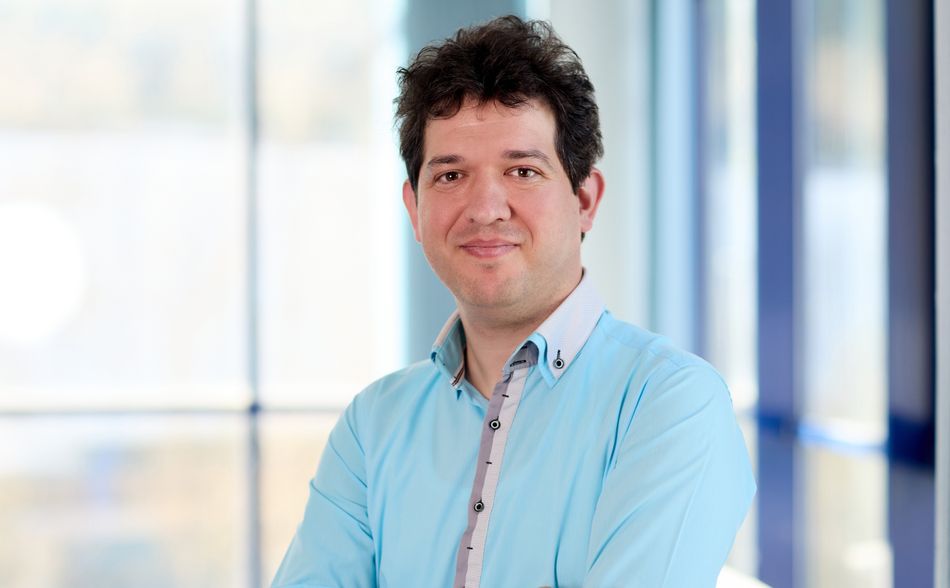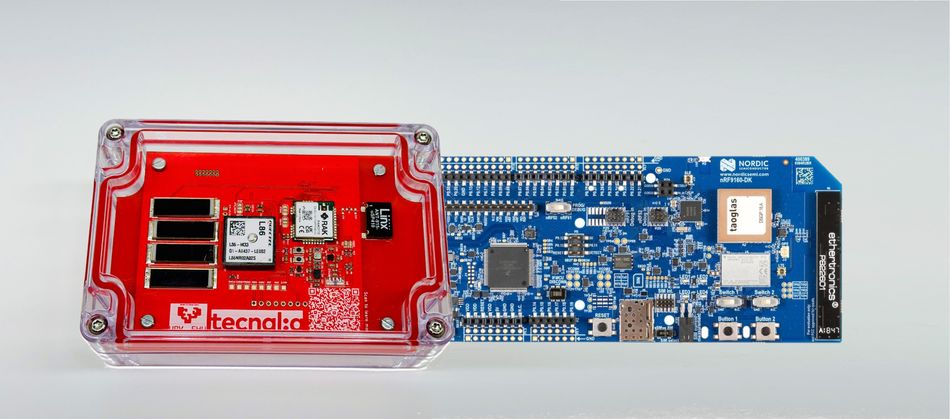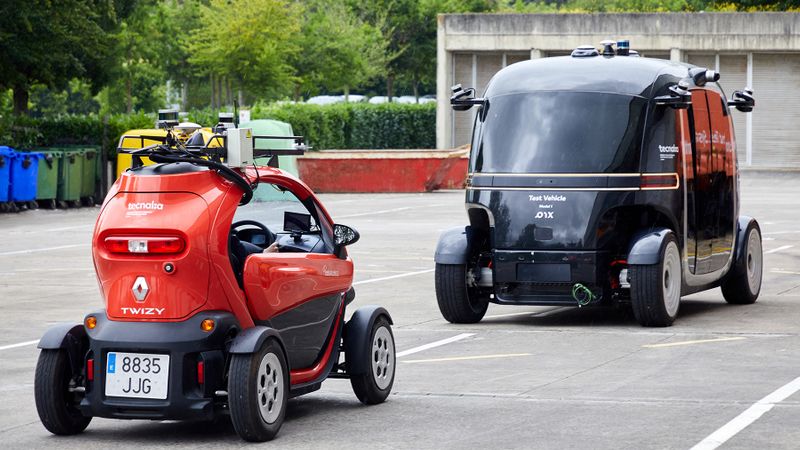Towards Sustainable Logistics Infrastructure: An Interview with Tecnalia
Introducing the Winner of the Connect for Good Challenge 2023
“For a new product to be successful, it is not enough for it to work—almost everything around us works quite well. The design matters.”
This is what Iván Arakistain, a technologist and researcher at Tecnalia said. After winning the Connect for Good challenge, we interviewed Arakistain to discuss his award-winning project on sustainable logistics infrastructure and his insights into the logistics industry, particularly that of perishable goods.
Logistics is a dynamic field fraught with challenges, and sustainability is a growing concern, particularly in transporting perishable goods. Iván Arakistain, representing Tecnalia, won first place in the Connect for Good challenge with an innovative concept that leverages a low-power IoT solution to monitor and enable eco-friendly transport of perishable goods.
The Connect for Good Challenge is a joint initiative by Nordic Semiconductor, Mouser Electronics, Soracom, and Crowd Supply aimed at fostering innovation for social and environmental good. It brought together a worldwide network of engineers, entrepreneurs, and developers around one mission: “to devise low-power wireless solutions that contribute towards achieving the United Nations Sustainable Development Goals.”
Arakistain's winning project is a game-changer in sustainable logistics. Through advanced monitoring and anomaly detection, this innovative solution optimizes the transport of perishable goods while eliminating the need for energy-intensive refrigerated cargo trailers. Thus, it significantly reduces carbon emissions and operational costs while ensuring the integrity of the cold chain. Through the integration of IoT technology, including low-energy sensors and GPS and coupled with mini solar panels for autonomy, the project sets a new standard for eco-friendly transport in the logistics industry, with broad implications for global sustainability efforts. The key component of this project is the integration of the nRF9160 Development Kit, chosen specifically for its low energy consumption and reliable cellular connectivity.
In this exclusive interview, Arakistain sheds light on his journey, the inspiration behind his project, and the impact he envisions on the logistics industry's future.
Interview with Iván Arakistain of Tecnalia
Can you briefly describe your winning project and the main problem it addresses in the logistics industry?
One of the main challenges of the logistics industry is the sustainable transport transition. This focuses on decarbonizing the transport industry, especially because today, at least in Spain, it’s heavily based on trucks; most of the logistics happen on the road, and trucks consume a lot of fuel. So, we have to shift from that to a cleaner way of transport.
Some years ago, we had a customer who sold precooked food. They mentioned something to us that sparked this idea process: If they could deliver the food in one day from their factory to the end customer, they would be able to avoid refrigerated transportation, especially since it’s relatively expensive, requires a lot of fuel, and is very complex.
So, we started exploring that. At that time, the technology was not quite ready for the application, mainly for areas like the south of Spain, where it's very hot in the summer. The logistics were not as fast as today, but as things have evolved, we are now able to transport food—or perishable goods—in proper condition to the end customer in a short a time as needed so it arrives safely.

What inspired you to focus on developing a more sustainable method for transporting perishable goods?
Well, the main goal is to deliver goods fast and with as low carbon emissions as possible. For that, we must change from only using transport by trucks to combining truck and train, which is obviously much cleaner environmentally. By doing so we can ensure more availability, lower cost per kilometer, and a smaller cargo footprint.
Let’s look at how your project aligns with the Sustainability Development Goals. Could you tell us how your solution targets these goals?
Our solution’s practical implications impact goals 7 (Affordable and Clean Energy), 11 (Sustainable Cities and Communities), and 13 (Climate Action). We are very focused on energy efficiency and sustainability goals for cities and districts. Our application can help reduce the cargo footprint and accelerate the transition from the current fuel-based transport to a more electrified way of transport.
Of course, we cannot transition directly from 0 to 100%, so we must ensure the transition is smooth. In our area of focus, the technology background is in artificial intelligence for microcontrollers and small devices. We embed this intelligence into the embedded device so that we can know via our electronic sensors if the transported food is in good condition. We can also sense whether any volatile compounds can impact the condition of the food.
By making those changes, we estimate that up to 10% of carbon reduction is possible. And that also applies to energy consumption, even though I’m not sure if it’s a linear relationship. However, the estimation stands.
Let's move onto the technical side. How does your solution work? Is embedded AI the differentiator from traditional energy-intensive refrigeration?
As I said, we are focused on AI for microcontrollers. So, first, we develop the AI models in servers and powerful computers. Then, we reduce those models so that they can run in a small controller with a few kilobytes or a small RAM. For this application, we are focused on two types of inference.
The first type of inference is air quality to determine the state of the product. The second inference type is AI for vibration analysis, which is something we have implemented here and in other projects. In this case, we can analyze if the vibration of products in the truck matches the orientation to make sure everything is good. In other cases, we also do this AI analysis of vibration for structural health and many other applications.

How accurate and precise are the AI model results in a real-world application?
There are two processes that we do. First, we collect all the data, and then we perform model training and model testing on our computers. We split the data set into two parts: about 80% of the data is used for training the model, and the remaining 20% or so is used for testing the model.
In our computer simulation, the results were very good; you can get up to 96% accuracy. But we both know that’s not the reality. Getting a very high score virtually means the model is quite good. However, when you go into the real world and flash the firmware into the microcontroller you’re using in the actual sensor, the accuracy decreases a bit. Still, we can get good enough accuracy with this model.
Were there any particular challenges you faced in the development process, and how did you overcome them?
As I said earlier, the original idea came some years ago with this customer we were working with. They produced precooked food, and we did some real testing with them. We sent the food with a trucker and other things to actual customers. At that moment, we realized that the technology was not quite ready, not because of the electronics but because of the isolation and insulation challenges. For that, you’d need excellent isolating materials so that temperatures are kept in the correct range.
This was about eight to nine years ago. At that point, we did develop a complete solution, and we knew the idea was good, but it was not quite ready because of the isolation challenge. Since then, we have kept thinking and working on it, and now we know that it is a feasible application, especially since there are much more efficient containers for food transport than years ago. There are better isolation materials, which helped this improve.
Looking into the next decade, what are the biggest hurdles in scaling and implementing your solution across different regions and logistics networks?
The main difficulty is the limited time for delivery: It has to be done within the first 24 to 48 hours and the products need a low temperature range.
Of course, I think it's scalable. Still, one of the biggest challenges is the container. We need to use special containers with good insulation for this. Basically, once we are able to prove to customers that they are going to save so much on each transportation, then it makes sense.
So far, we have tested with first-class precooked food, which is already prepared and ready for eating upon reheating in a restaurant or somewhere else. We are not so focused on uncooked food.
Let’s dive a bit into the economic side of things. What are the economic benefits of your solution for logistics companies and end users?
The economic benefits mainly rely on the use of nonrefrigerated transportation. As a result, you can save about 10% of the transportation cost. It consumes less fuel and energy. It's simply more efficient. We are also very interested in combining ways of transportation: using not only trucks but also trains. Here in Spain, we have quite a robust train infrastructure, but nowadays, it is more focused on passengers than goods. So, I think we must leverage the train infrastructure and combine it with trucks in the future.
Also, for international shipments, combining the truck with the train is important so that the driver does not need to drive so far. The truck driver would simply mount the truck with the goods from a train carriage, move onto another carriage to collect goods from there, and then deliver them locally.
This is a standard logistics process. We are simply using the existing infrastructure. The only additional requirement would be the special containers for the food that I mentioned earlier.
You mentioned one customer already. Have you discussed this with other members of your target market? How have your target customers responded to your solution so far?
Yes. 15 days ago, I was at a logistics and transportation fair in Bilbao. I gave a speech there and talked to potential customers. Clearly, there is some potential, but of course, we need to keep the focus on the end customer.
By focusing on the end customer, what strategies are you employing to encourage the adoption of your technology within the market?
In Tecnalia, we work with different approaches to ensure the technology adoption. We identify and manage deep-tech business opportunities, through a venture building process to accelerate their industrial commercialization. We create new startups or commercialize licenses, accelerating the incubation of technological assets until they are turned into investment opportunities capable of generating economic and social value.
How do you see your solution evolving in the next five years?
I think that it has quite a lot of potential. We are still in a transition stage, where not everything is well-defined. The path is clear: we have to shift to the electrification of transport. But the speed at which this is going to happen is yet to be clear. Yet, I think that it has significant potential for the future because logistics is a fast-growing sector.
Is there close competition to your technology from bigger companies already established in the logistics market?
Yes, there is. For example, some years ago, big companies like Amazon tried to sell perishable food to end customers in a very short time. However, they were not very successful because it’s not easy to deliver that fast in a cost-efficient way.
Our case is a little different. It focuses on precooked food for industrial partners. The customer I mentioned earlier is not selling to end customers but rather to restaurants and other businesses. So yes, there are big players, but they are not entirely in the same market niche as ours.
Are there other applications or industries where your technology could be applied beyond the niche cold chain logistics?
Yes, we use embedded AI for structural health monitoring in various cases. Here, you would need to know the condition of a structure. In Tecnalia, for example, we have some dedicated lab equipment, such as sensitive accelerometers. But the cost of such devices is typically quite high. They are not devices you can leave on a structure but rather devices you use within a specific timeframe.
So, we are developing small, affordable devices that can use MEMS accelerometers, inexpensive microcontrollers, and embedded AI to provide early warnings if there is an anomaly, failure, or any other event on which the model is trained.
The new devices we are developing would cost as much as an order of magnitude less than the typical measuring and monitoring equipment. They would only provide an early warning, after which the experts could go and perform more extensive measurement and testing.
Another example of our embedded AI would be audio detection. Consider a large dataset of street sounds that can take over six gigabytes – that is a lot of information. For this, it's possible to train an AI model that takes no more than kilobytes – which is significantly less – and embed it into a microcontroller to classify the sounds. We tested this, and the model was able to accurately identify and classify the sounds of a car horn, for example, a dog barking or children playing. This is a solution to tackle problems with lots of data using a compressed model that can accurately classify the data without requiring so much power.
Going back to the project experience, what have you learned from working on this project that you think is crucial for innovation in sustainable technologies?
At Tecnalia, we are experts in many different fields. The most interesting thing about working in an applied research and technological development centre like Tecnalia is that I can collaborate with experts in multiple fields, such as electronics, logistics, structures, and energy efficiency. For such projects to work, I have to work with lots of people to solve the problem.
Also, experts in AI are not all the same. Some of them are more focused on big processors like NVidia devices, and we need to collaborate with them to understand the models and be able to quantize and reduce the models down to the microcontroller level.
What advice would you give to other entrepreneurs or innovators looking to make a difference in the green technology space?
My advice would be to prototype as much as they can. In electronics, we are quite used to prototyping fast. That's a good thing for our sector. But in other areas, it might be more difficult to prototype. I would also encourage people to collaborate with other experts and learn from them.
Conclusion
Iván Arakistain's winning project exemplifies the potential for low-power IoT solutions to revolutionize the transportation of perishable goods. By leveraging advanced monitoring and anomaly detection, Arakistain's project offers a promising avenue for reducing carbon emissions and operational costs while maintaining the integrity of the cold chain.
As we look to the future, the scalability and adoption of such solutions present ongoing challenges. Yet the momentum generated by initiatives like the Connect for Good Challenge signals a promising trajectory towards more innovation and sustainable solutions and systems. For more information about the challenge and its winners, check out our dedicated article: Connect for Good Challenge Winners: Logistics Infrastructure Monitoring, Smart Bees and Bioreactors.

